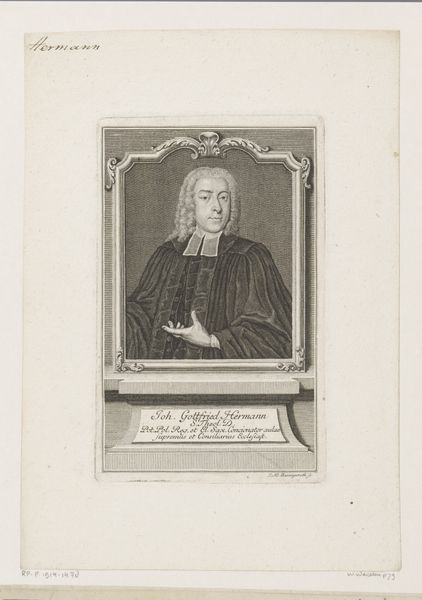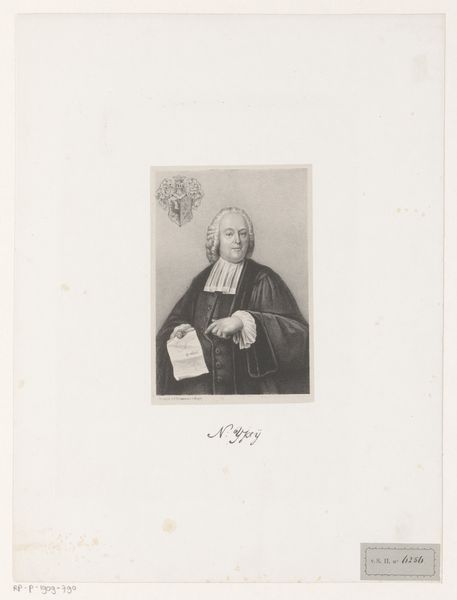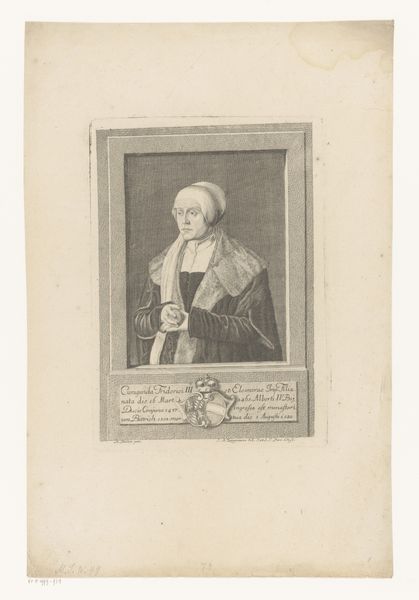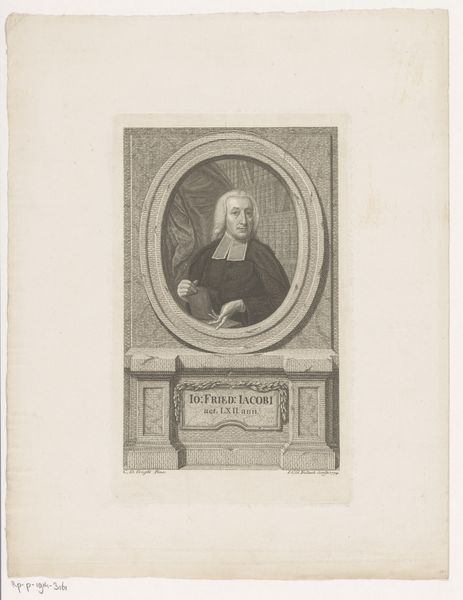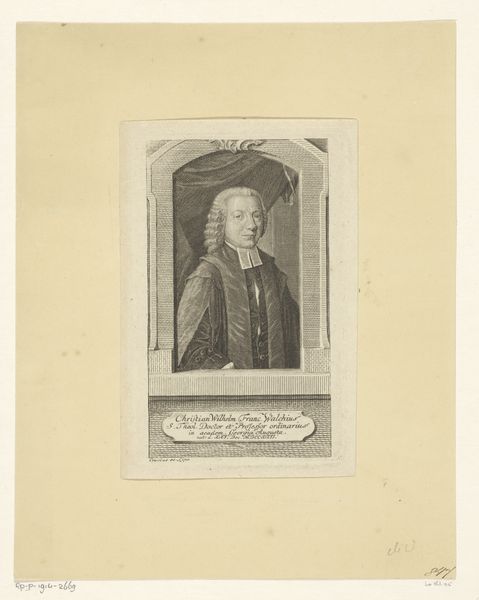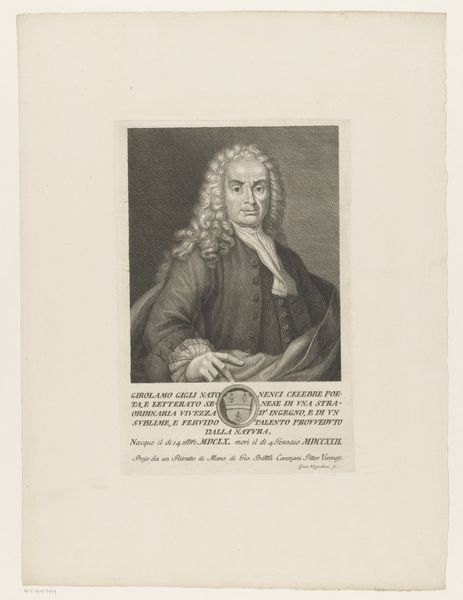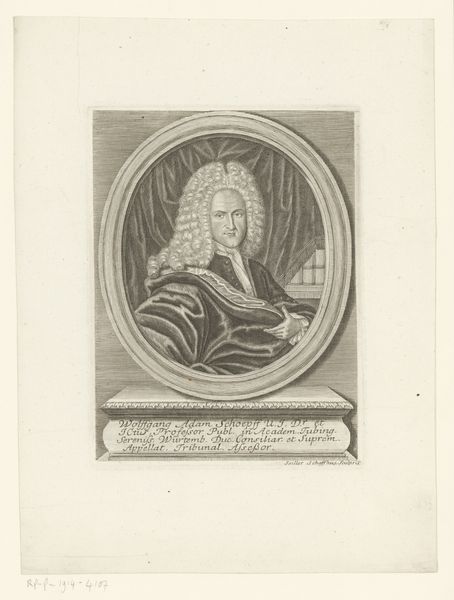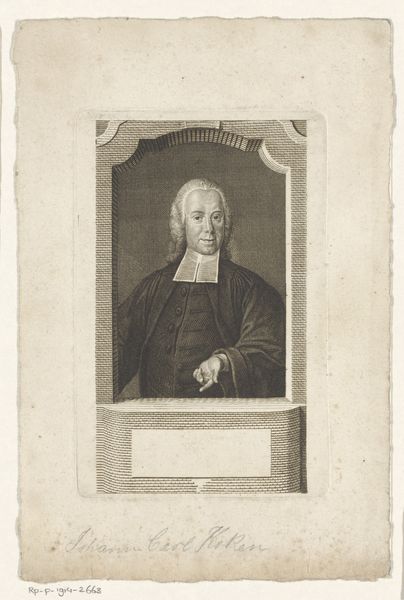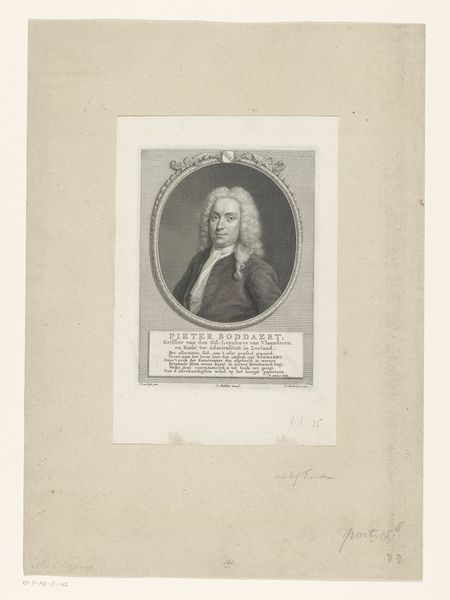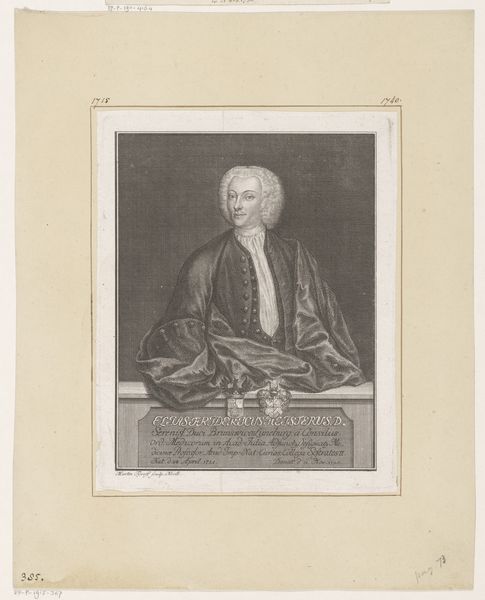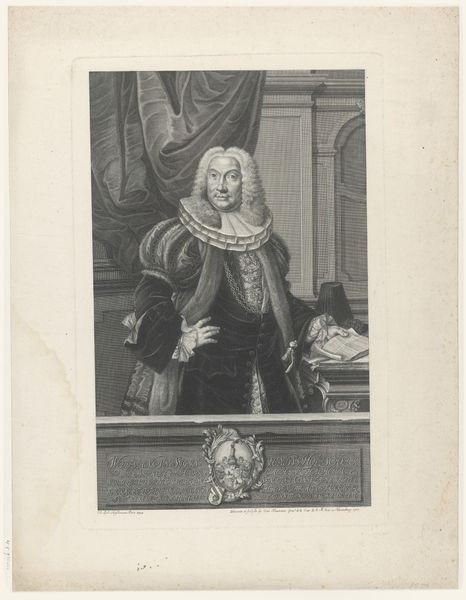
Dimensions: height 150 mm, width 96 mm
Copyright: Rijks Museum: Open Domain
Editor: Here we have David Herrliberger’s "Portret van Johann Hofer," likely created sometime between 1752 and 1777. It’s a rather small engraving, and I’m struck by how formally Hofer is posed. What formal elements stand out to you in this piece? Curator: Formally, I am drawn to the use of line. Notice how the dense, cross-hatched lines create both tonal variation and the illusion of three-dimensionality. Consider the way Herrliberger has deployed line to delineate Hofer's face versus the draping of his robes. Editor: Yes, I see how the lines define the texture of the clothing versus the smoothness of the face. The hatching technique is so intricate! Curator: Precisely. And let us not disregard the subtle balance created by the composition: the rectangular border versus the oval face. How do those contrasting shapes impact your experience? Editor: I see it; the frame seems to solidify Hofer's presence, making him more imposing despite the print's diminutive size. Do you think the inscription affects the work formally? Curator: Undeniably. The decorative inscription provides both a visual anchor and contextual weight, reinforcing the subject’s importance while contributing to a harmonious composition overall. One could also see the contrast with the subject above as an artistic statement as to the subject being more than words. Editor: That’s a great point. I initially saw the inscription simply as providing context, but thinking about it now, its inclusion elevates the portrait's entire structure. Curator: Indeed. It encourages one to view Herrliberger's print not merely as representation, but as an essay in the language of visual forms. Editor: This has given me a whole new way of appreciating the deliberate construction of the portrait. Thanks!
Comments
No comments
Be the first to comment and join the conversation on the ultimate creative platform.
